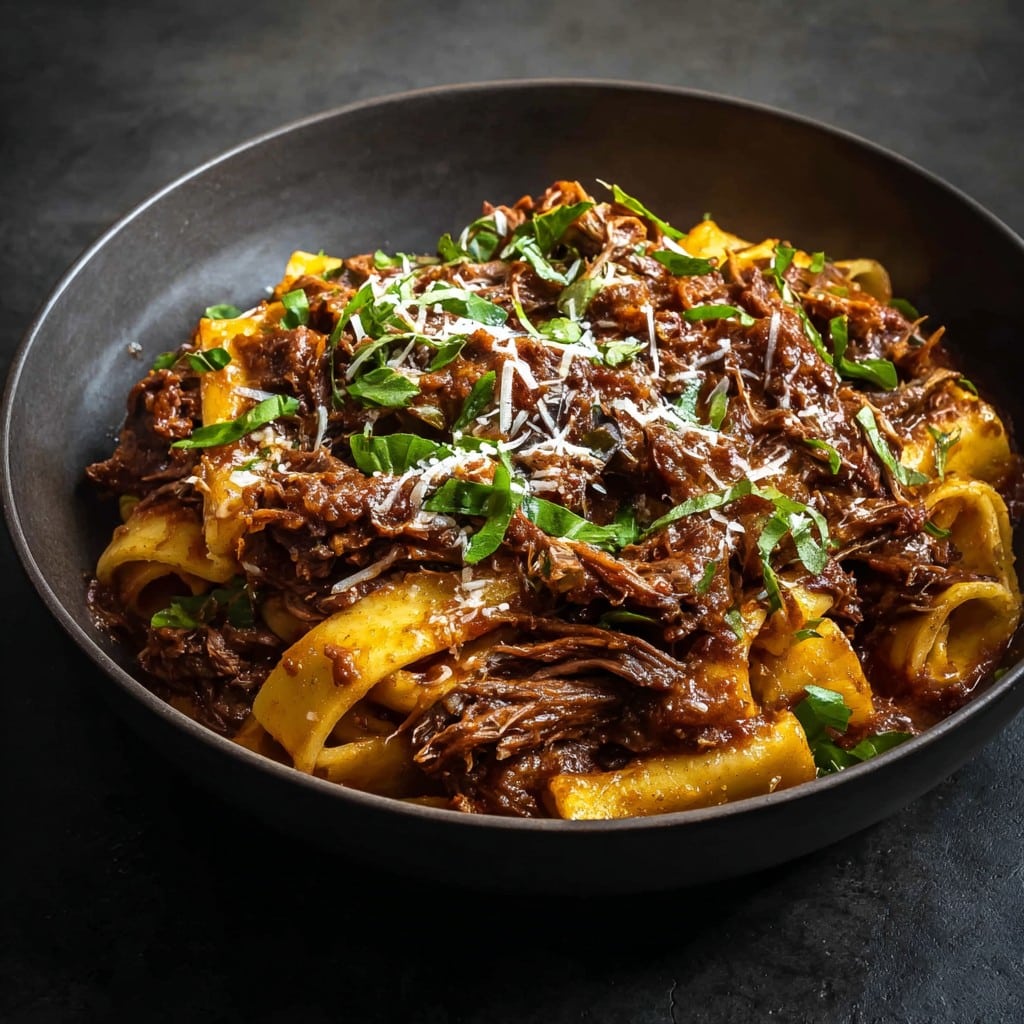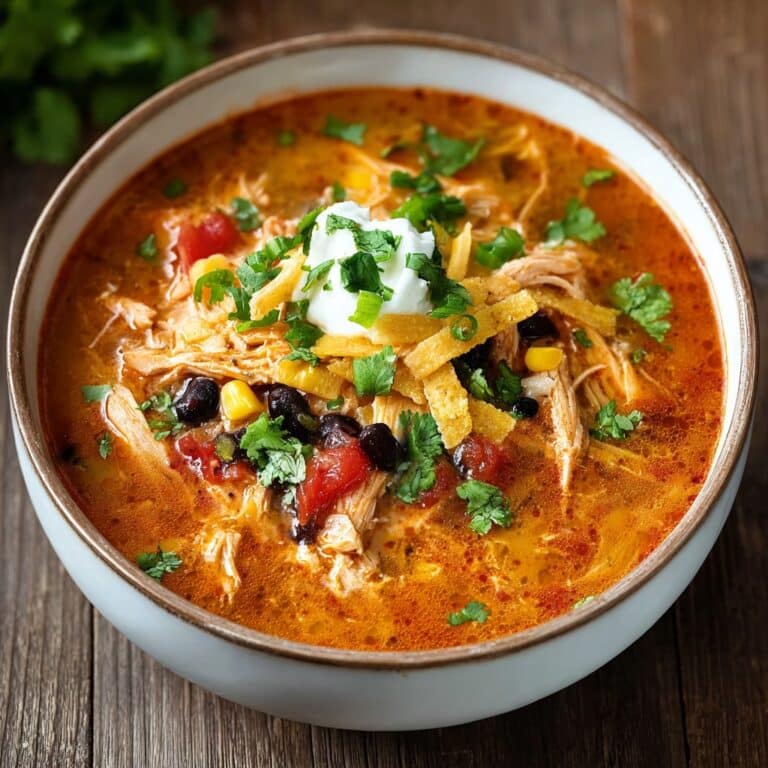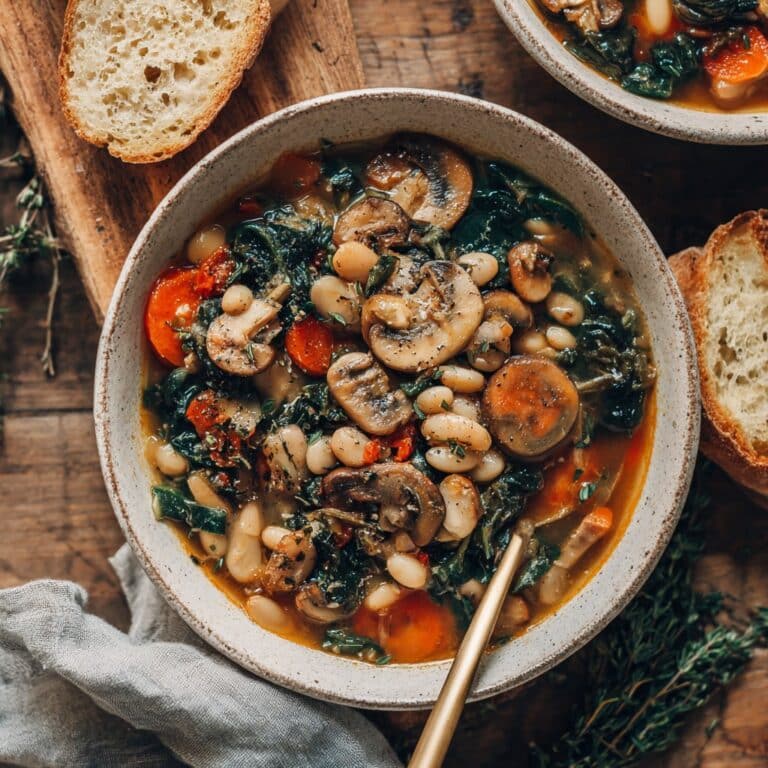Short Rib Ragu Dinner Guide: My Comfy, Cozy Recipe Edition
This Short Rib Ragu is Like a Big Ol’ Blanket (But Tastier)
So, the first time I made short rib ragu for the whole gang, I honestly thought about running out to get takeout just in case it flopped. My kitchen was chaos—there may or may not have been tomato splatters on the ceiling. But once the aroma started rolling out, everyone wandered in, eyes wide. (Even my neighbor Pete stuck his head in; he never misses a meal.) Funny thing: I nearly burnt the onions, but hey, a little char just adds character, right? Anyway, this dish has become my cold-weather, comfort-food hero. If you’ve got a chilly weekend and maybe a glass of wine handy, you’re all set.
Why You’ll Be Obsessed With This (Or At Least I Am)
I usually make this on Sundays when everyone’s around, and honestly, my kids get more excited about this than pizza night. It’s so hearty it chases away any gloom (and, erm, hides my tendency to overcook pasta sometimes). My family goes wild for it since the meat is basically spoon-tender (but if you sneak a taste before it’s done… well, it’s still worth it). And if you’ve got leftovers—which is rare around here—they taste even better the next day, somehow. Not joking, I sometimes eat it cold straight from the fridge. But I admit, waiting for the short ribs to do their thing, well, it’s not ideal if you’re hangry. Flip side: perfect excuse for a pre-dinner snack (or, you know, another glass of wine… or both?).
Here’s What You’ll Need (Substitutions Galore)
- About 2.5 to 3 lbs (1 to 1.3kg) bone-in beef short ribs (I’ve swapped in boneless in a pinch; still good, just less flavor. My gran swore you had to use bone-in, though, probably for the drama.)
- Salt and black pepper, to taste (though don’t go crazy at first; you can always add more but you can’t un-salt… learned that the hard way)
- 2-3 tablespoons olive oil (Any will do, honestly I have used a bit of avocado oil too)
- 1 large onion, diced (Some folks use two shallots instead, works fine!)
- 2 carrots, peeled & diced (Sometimes I skip these, but then I miss the hint of sweetness)
- 2 celery stalks, diced (You can leave this out, I do sometimes if I forgot to buy it. No biggie)
- 4-5 garlic cloves, minced (I once used that jarred stuff—shhh—it’s not the same)
- 2 tablespoons tomato paste (Here’s why some folks go for double concentrate, up to you)
- 1 cup dry red wine (Use whatever you’d drink, or skip and sub with beef stock)
- 1 can (28 oz) crushed tomatoes (I’ve even used passata or whole tomatoes squished up—no rules)
- 2 cups beef broth or stock (Chicken stock works too in a bind, though the flavor’s a bit lighter)
- 2 bay leaves
- A good sprinkle of dried oregano & thyme (I just eyeball this. Sometimes a sprig of rosemary if I’m feeling fancy)
- Pasta—pappardelle is king, but tagliatelle, rigatoni, or whatever you find lurking in your pantry works too
- Grated parmesan, for serving (Or pecorino if that’s what’s in the fridge)
How I Throw It All Together (Imperfectly, Of Course)
- Season the Short Ribs: Generously salt and pepper the short ribs all over. Actually, sometimes I do this an hour ahead and stash them in the fridge, but that’s only when I remember… Anyway, it helps.
- Sear Like You Mean It: Heat the oil in a heavy-bottomed pot (Dutch oven is my go-to, but I’ve done this in my battered old soup pot just fine) on medium-high. Sear the short ribs in batches so they brown, not steam—if you crowd the pan, they sulk. Get them golden on all sides—don’t worry about messy burnt bits, that’s FLAVOR.
- The Sofrito Bit: Set browned ribs aside (like royalty). In the same pot, toss in onions, carrots, celery with a pinch of salt. Stir a few minutes until everything softens and caramel-y and the kitchen smells amazing. Scrape up any bits stuck to the bottom! Add garlic, and after a minute when it smells almost sweet, add tomato paste. Cook it til it darkens and gets fragrant—this is where I usually sneak a taste.
- Wine O’Clock: Pour in the wine and let it bubble away for a few minutes—I like to imagine I’m on a cooking show here—scraping up any pan bits (if any wine escapes into your glass, well, it happens).
- Sauce and Simmer: Add crushed tomatoes, beef broth, herbs, and bay leaves. Give it a good stir, and carefully plop the short ribs (and any juices) back in. Liquid should mostly cover the meat; if not, a splash more broth or water won’t hurt.
- Low and Slow Time: Lid goes on, heat goes to low, and now you wait. Like, 2.5 to 3 hours wait. Go walk the dog, watch a show, or read about why tomato paste brands actually matter (here’s one deep dive I always get lost in). Flip the ribs halfway if you remember; if you forget, no big deal.
- Shred and Finish: Ribs should pretty much fall apart when poked with a fork. Fish them out, shred meat off the bones, and get rid of bones and big fat bits (or sneak a nibble—I won’t tell). Pop shredded meat back in the sauce; simmer uncovered another 15-30 minutes to thicken as much as you fancy. Taste, adjust salt, toss out bay leaves.
- Pasta Time! While the sauce thickens, boil your pasta in lots of salty water. Drain (save that pasta water!), and toss in sauce. Add a splash of pasta water if it’s looking dry. Heap onto plates (or straight from the pot if you’re like me), shower with parmesan. Done!
Notes—AKA Stuff I Learned the Hard Way
- If you skim some fat off the top before shredding, sauce will taste a bit lighter. Or don’t, and call it rustic.
- I once added a chili pepper; regretted it. Short rib ragu likes to keep things mellow.
- The sauce tastes even better after a night in the fridge. Leftovers, if you have ‘em, will seriously make your desk lunch legendary.
Variations I’ve Messed With (Some Winners, Some Not)
I’ve thrown in a bit of fennel bulb before—nice vibe, sweet and subtle. Once tried subbing smoky bacon for some of the olive oil at the start: so good, if you like it rich. And, okay, I once tried this with boneless country-style pork ribs instead—good but… not the same magic. Use what you’ve got, though, it’s all good practice.
Gear You Actually Need (Or Don’t)
Dutch oven is ideal, but hey, a big sturdy pot with a tight-fitting lid totally works. Friends have even tried this in a slow cooker (not my thing, but they swear by it). If you don’t own a pasta pot, use the biggest saucepan/stockpot you’ve got. Whisk? I just use a fork when I forget where I left mine.

How to Store (But Mine Disappears Fast)
In theory, keeps in the fridge 3 days, freezer for a couple months. Realistically, it gets demolished in my house by the next day. Toss leftovers with a splash of stock when reheating so it saucifies up again.
How We Eat It (And What to Serve Alongside)
Piled high on fat noodles, with a mountain of extra parmesan—yes, we go overboard. If you’re feeling fancy, some crusty bread to mop up sauce is mandatory. I like a simple green salad on the side, but if I’m honest, nobody in my family ever actually eats it unless there’s loads of vinaigrette. Oh, and a bold Italian red wine if you’re into that. My cousin swears by serving it over polenta instead of pasta… might try that soon, who knows?
Pro Tips I Learned the Hard Way
- Don’t rush the browning—seriously, I’ve tried. And regretted it. It’s not pretty (and not as tasty).
- Don’t dump all the veg in before the meat’s browned, or you’ll get a weird stew, not a ragu. Trust me.
- If you oversalt, a peeled potato in the simmering pot does help. Not a magic fix, but better than hoping nobody notices.
FAQ: Real Questions from People Who’ve Eaten This (or Want To)
- Can I make this ahead? Oh, absolutely—the flavors get even deeper overnight. Sometimes I plan ahead; sometimes I just luck out with leftovers.
- What pasta is best? Totally up to you. If I can find pappardelle, I use that. But honestly, even penne works fine. Once I used spaghetti, and nobody complained.
- Can I skip the wine? Sure. Add more broth or water, but the wine adds a nice depth somehow. Or just add a splash of balsamic for a little zing—I’ve done that.
- Can I do this in a slow cooker? Totally. Brown the meat (if you want), then dump everything in and let it go for 7-8 hours on low. Texture will be a tiny bit different, but still tasty.
- It’s too oily, what should I do? Skim some fat off the top with a spoon before serving—much easier once it chills in the fridge, since the fat solidifies and you can just lift it off. Or just embrace it, Italian-nonna style.
- Help! My sauce is too thin. No worries! Just simmer it with the lid off for a while, or add a bit less broth next time. Actually, a handful of breadcrumbs will thicken it if you’re truly desperate.
Right, digression incoming—every time I make this, I get asked what’s for dessert before anyone’s even eaten dinner. If you’re wondering, sometimes it’s just vanilla ice cream, and sometimes it’s nothing but coffee and more bread. Life’s short. Enjoy your ragu however you want!
Ingredients
- 3 lbs bone-in beef short ribs
- 2 tbsp olive oil
- 1 large yellow onion, diced
- 3 cloves garlic, minced
- 2 carrots, peeled and diced
- 2 celery stalks, diced
- 2 cups crushed tomatoes
- 1 cup dry red wine
- 1 cup beef broth
- 2 tbsp tomato paste
- 1 tsp dried thyme
- 1 tsp dried oregano
- 1 bay leaf
- Salt and black pepper, to taste
- Fresh parsley, chopped (for serving)
Instructions
-
1Pat the short ribs dry and season generously with salt and black pepper.
-
2In a large Dutch oven, heat the olive oil over medium-high heat. Sear the short ribs on all sides until deeply browned, then remove and set aside.
-
3Add the onion, carrots, and celery to the pot. Cook until vegetables are softened, about 5-7 minutes. Stir in the garlic and tomato paste, cooking for 1 minute.
-
4Pour in the red wine and scrape up any browned bits. Add the crushed tomatoes, beef broth, thyme, oregano, and bay leaf. Return the short ribs to the pot.
-
5Bring to a simmer, then cover and cook on low heat for 3 hours, until meat is very tender and falls off the bone.
-
6Remove the short ribs and shred the meat, discarding bones and excess fat. Return the shredded meat to the sauce, stir well, adjust seasoning, and serve over pasta or polenta garnished with fresh parsley.
Approximate Information for One Serving
Nutrition Disclaimers
Number of total servings shown is approximate. Actual number of servings will depend on your preferred portion sizes.
Nutritional values shown are general guidelines and reflect information for 1 serving using the ingredients listed, not including any optional ingredients. Actual macros may vary slightly depending on specific brands and types of ingredients used.
To determine the weight of one serving, prepare the recipe as instructed. Weigh the finished recipe, then divide the weight of the finished recipe (not including the weight of the container the food is in) by the desired number of servings. Result will be the weight of one serving.
Did you make this recipe?
Please consider Pinning it!!






